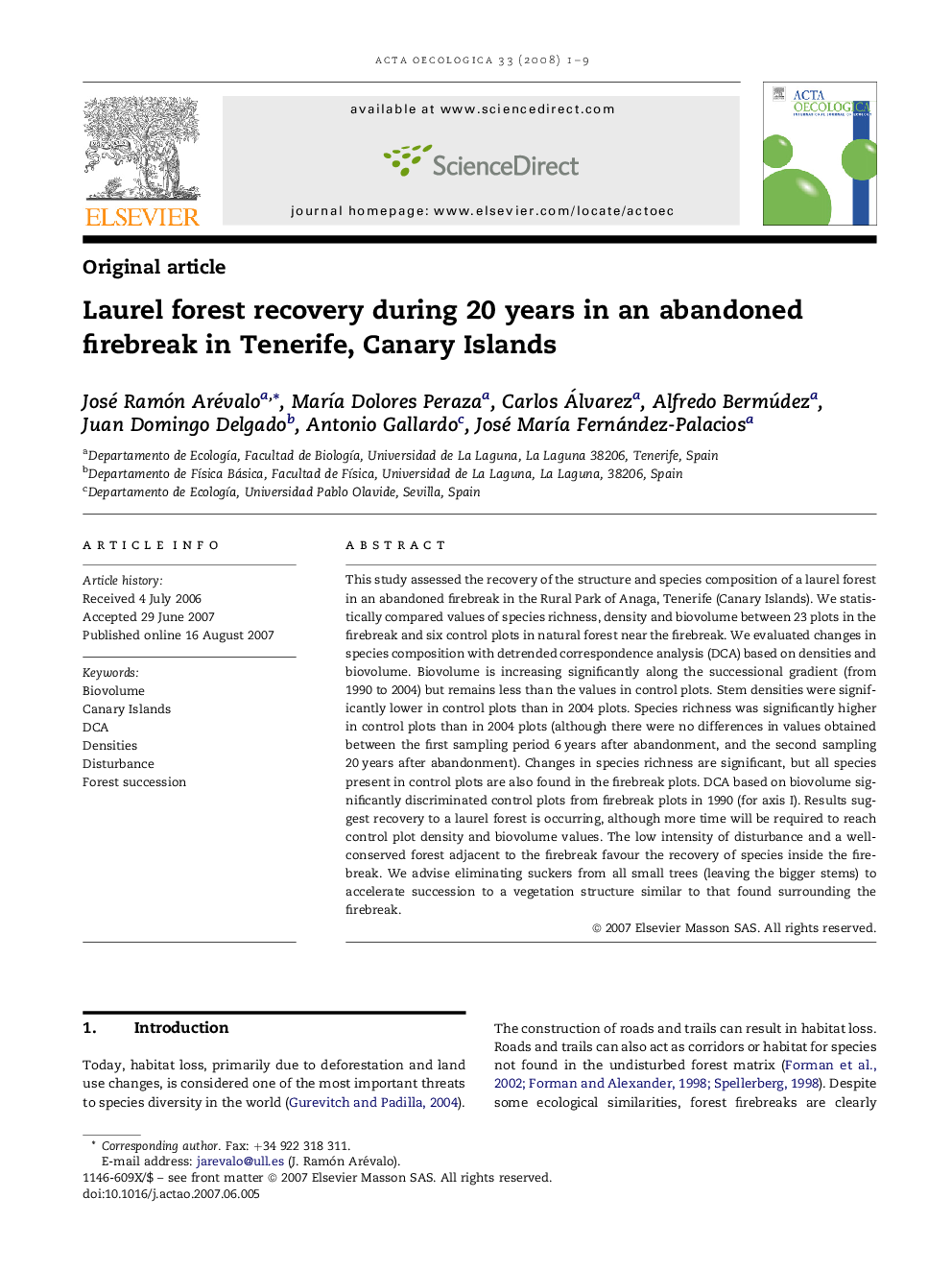| Article ID | Journal | Published Year | Pages | File Type |
|---|---|---|---|---|
| 4381154 | Acta Oecologica | 2008 | 9 Pages |
This study assessed the recovery of the structure and species composition of a laurel forest in an abandoned firebreak in the Rural Park of Anaga, Tenerife (Canary Islands). We statistically compared values of species richness, density and biovolume between 23 plots in the firebreak and six control plots in natural forest near the firebreak. We evaluated changes in species composition with detrended correspondence analysis (DCA) based on densities and biovolume. Biovolume is increasing significantly along the successional gradient (from 1990 to 2004) but remains less than the values in control plots. Stem densities were significantly lower in control plots than in 2004 plots. Species richness was significantly higher in control plots than in 2004 plots (although there were no differences in values obtained between the first sampling period 6 years after abandonment, and the second sampling 20 years after abandonment). Changes in species richness are significant, but all species present in control plots are also found in the firebreak plots. DCA based on biovolume significantly discriminated control plots from firebreak plots in 1990 (for axis I). Results suggest recovery to a laurel forest is occurring, although more time will be required to reach control plot density and biovolume values. The low intensity of disturbance and a well-conserved forest adjacent to the firebreak favour the recovery of species inside the firebreak. We advise eliminating suckers from all small trees (leaving the bigger stems) to accelerate succession to a vegetation structure similar to that found surrounding the firebreak.
